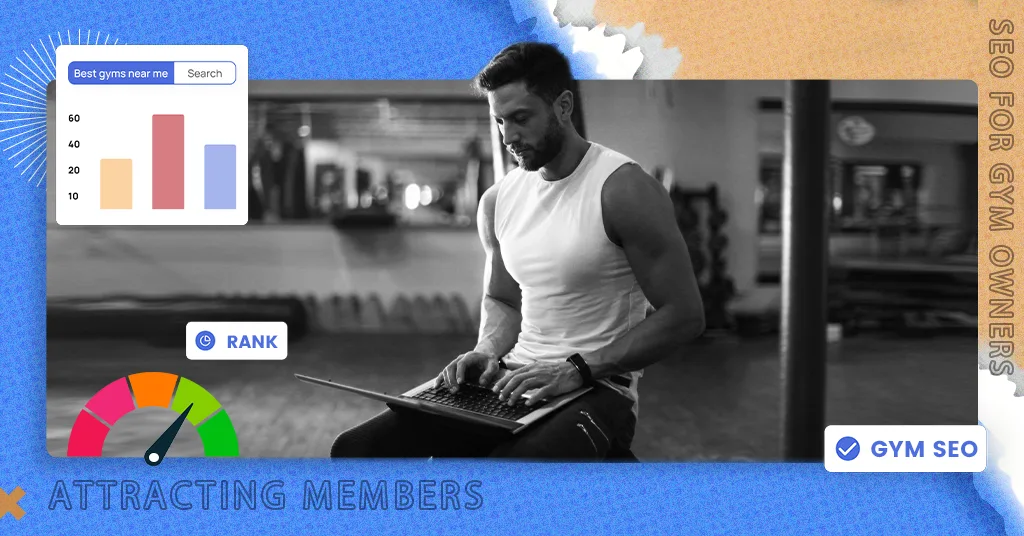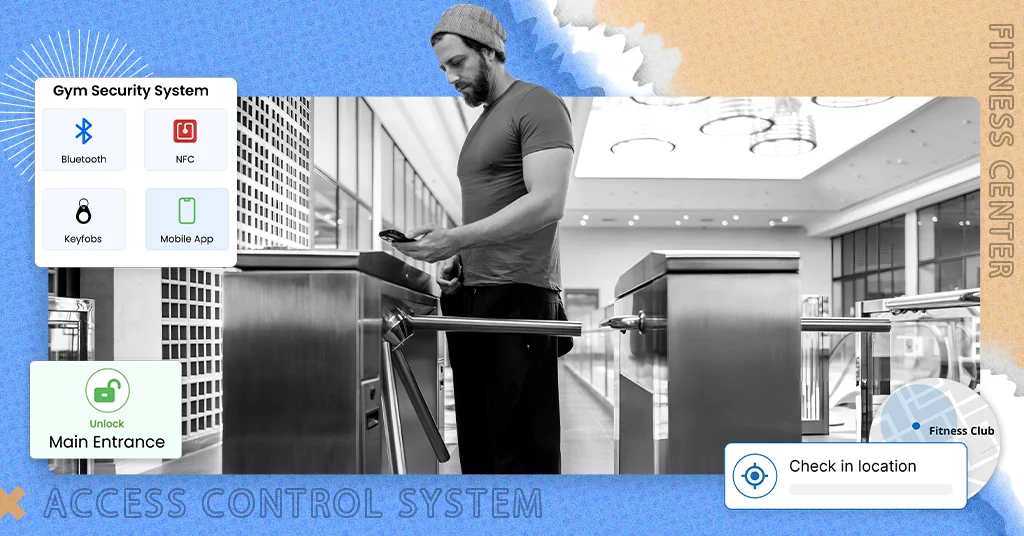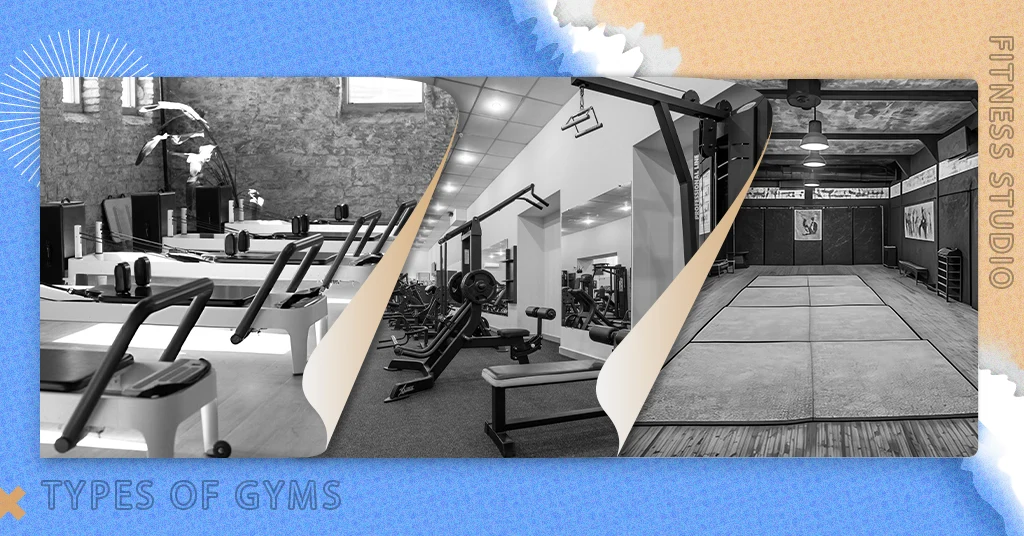The fitness industry has never been more competitive. With gyms, boutique studios, and personal trainers popping up on every corner, attracting new members isn’t just about offering great equipment or classes; it’s about being discovered online. The reality is that most people looking for a new gym start with a quick Google search. They type phrases like “gym near me,” “affordable fitness center in [City],” or “personal training in [City],” and then choose from the top results. If your gym doesn’t appear in those search results, you’re already losing potential members to competitors.
This is where Search Engine Optimization (SEO) comes in. SEO is the process of improving your website and online presence so that search engines like Google rank you higher when people are looking for gyms and fitness services in your area. Unlike paid ads, which stop working the moment you stop spending, SEO is a long-term investment that can bring you consistent traffic and new members month after month.
For gym owners, SEO does more than just boost website visits; it attracts qualified leads. These are people who are actively searching for a solution you provide. Whether it’s someone looking for a yoga class, a weight loss program, or a 24/7 gym, SEO puts your business in front of them at the exact moment they’re ready to take action.
In this guide, we’ll break down SEO into clear, actionable steps tailored specifically for gym owners. By following this roadmap, you can increase visibility, generate more leads, and grow memberships without relying solely on expensive ads or word of mouth.
SEO strategy overview for gyms
SEO can feel complicated at first, but when broken into steps, it becomes manageable and effective. A successful gym SEO strategy is built on seven core pillars, each working together to maximize your online visibility:
- Keyword research: Identifying the exact words and phrases potential members use when searching online.
- On-page SEO: Optimizing the content and structure of your gym’s website so it’s both user-friendly and search engine-friendly.
- Technical SEO: Ensuring your website loads quickly, is mobile-friendly, and free from errors that hurt rankings.
- Local SEO: Optimizing for location-specific searches like “gym near me” or “fitness classes in [City].”
- Content marketing: Creating valuable, educational, and engaging content (blogs, videos, guides) that attracts and retains members.
- Off-page SEO: Building authority through backlinks, citations, and online reviews that prove your gym is trustworthy.
- Tracking & analytics: Measuring performance so you can refine your strategy and continuously improve results.
Each of these pillars contributes to the bigger picture: getting your gym discovered by the right people at the right time. Think of it as building a strong fitness routine for your business. Just like a balanced workout requires cardio, strength, flexibility, and recovery, your SEO plan needs all these elements working together to achieve lasting success.
By the end of this guide, you’ll not only understand each component but also have a 90-day action plan to start implementing SEO for your gym.
Finding the right fitness search terms
Keyword research is the foundation of every successful SEO strategy. For gym owners, it’s about discovering the exact words and phrases potential members type into search engines when they’re looking for fitness solutions. If you know what your audience is searching for, you can create content and optimize your website to meet that demand.
Why keyword research matters
Imagine creating a beautiful website filled with information about your classes and memberships, but nobody visits it because you’re not targeting the right search terms. That’s the risk of skipping keyword research. The right keywords connect your gym with motivated prospects, whether they’re searching for “yoga classes near me,” “24/7 gym in [City],” or “affordable student memberships.” By targeting these phrases, you ensure that your content shows up at the exact moment someone is ready to take action.
Step-by-step process for gym owners
- Brainstorm seed keywords
Start with the basics: “gym near me,” “fitness centre in [City],” “personal training [City].” These are high-intent terms that most people will use. - Expand with keyword tools
Use tools like Google Keyword Planner, Ubersuggest, or SEMrush to uncover related terms. For example, you might find:- “CrossFit gym [City]”
- “women’s only fitness classes [City]”
- “best yoga studio in [City]”
- Analyze competition
Look at which keywords other local gyms are ranking for. This gives you insight into what’s working in your area and where you can compete. - Focus on long-tail keywords
Long-tail keywords are longer, more specific phrases like “cheap gym memberships for students in Manchester.” They often have lower competition and higher intent, meaning searchers are closer to making a decision. - Leverage Google search console
Over time, track what real users are searching for when they land on your site. You may discover untapped opportunities to optimize content further.
By combining broad terms with location-specific and service-based keywords, you’ll create a keyword strategy that consistently drives the right kind of traffic, people who are ready to join a gym.
Building a gym website that ranks
Once you’ve identified the right keywords, the next step is to make sure your website is optimized so that both visitors and search engines can easily understand and navigate it. This involves two key areas: on-page SEO (the content and structure of your pages) and technical SEO (the behind-the-scenes performance factors). Together, they create a strong digital foundation for your gym.
On-page SEO essentials
Every page of your gym’s website should be optimized for clarity, relevance, and conversions. Start with title tags and meta descriptions; these are the snippets that appear in search results. They should include your target keywords and location. For example: “Affordable Gym Memberships in Manchester | [Gym Name].” A compelling description will encourage clicks.
Next, use headers (H1, H2, H3) to structure your content. For instance, an H1 might read “Gym in Manchester,” while H2 subheadings break down “Our Classes” and “Membership Options.” Naturally incorporate keywords into your copy, but avoid stuffing them unnaturally. Don’t forget image optimization; use descriptive alt text like “Manchester yoga class at [Gym Name].”
Internal linking is another vital piece. If a visitor is reading about your yoga classes, link to your membership plans or a blog about yoga benefits. This keeps users engaged and helps Google understand your site structure.
Technical SEO must-haves
A modern gym website must be mobile-friendly, since most people search on their phones. A responsive design ensures your site looks great on any screen size. Speed is also critical; slow-loading sites lose visitors quickly. Compress images, enable browser caching, and choose reliable hosting to achieve a load time under three seconds.
Make sure your site is secure by using HTTPS, as Google rewards secure websites. Additionally, set up Google Analytics and Search Console to monitor performance, and create a sitemap to help search engines crawl your site efficiently.
By combining strong on-page practices with solid technical performance, you’ll ensure your gym’s website not only ranks well but also converts visitors into paying members.
Winning the “near me” search
When people search for gyms online, they’re almost always looking for a local option. Phrases like “gym near me” or “fitness classes in [City]” are among the most common. This is why Local SEO is one of the most critical areas for gym owners. By optimizing your online presence for local searches, you ensure that your business shows up exactly when potential members are looking for a place to work out.
Optimize your Google Business Profile
Your Google Business Profile (GBP) is the cornerstone of local SEO. Start by claiming and verifying your profile if you haven’t already. Then, fill it out completely with accurate information: your business name, address, phone number (NAP), opening hours, website link, and services offered. Add high-quality photos of your gym facilities, classes, and trainers to give potential members a feel for your space. In your business description, naturally include location-based keywords such as “Manchester gym offering yoga, HIIT, and personal training.”
Keep your profile active by posting updates, whether it’s a new class launch, a special membership offer, or seasonal promotions. This not only engages users but also signals to Google that your business is active and relevant.
Local citations and directories
In addition to your Google profile, list your gym in online directories like Yelp, Yellow Pages, ClassPass, and any local business directories. The key is consistency; your NAP information must be exactly the same across all platforms. Even small differences (like “St.” vs. “Street”) can confuse search engines.
Reviews and ratings
Reviews play a huge role in both rankings and conversions. Encourage happy members to leave Google reviews and make it a practice to respond to all feedback. Thank people for positive reviews and address concerns in negative ones. Search engines reward businesses that actively manage their reputations, and potential customers trust gyms with strong reviews far more than those without.
By combining a well-optimized Google Business Profile, consistent citations, and a healthy stream of reviews, your gym can dominate local search results and attract members who are ready to sign up.
Becoming a fitness authority
In today’s digital world, a gym website alone isn’t enough to rank well. To truly stand out, you need to consistently publish valuable content that positions your gym as a trusted authority in health and fitness. Content marketing not only attracts more visitors but also keeps them engaged, builds trust, and increases the chances that they’ll sign up for a membership.
Why content marketing works for gyms
When people search online, they’re not always ready to buy; sometimes, they’re looking for guidance. For example, someone might search “beginner strength training routine” or “healthy meal prep ideas.” By publishing blogs or guides that answer these questions, you position your gym as a go-to source for expert advice. Over time, this builds brand awareness, trust, and loyalty. Importantly, helpful content also brings in long-tail traffic (specific search queries), which can be easier to rank for than broad terms like “gym.”
Content ideas that attract members
- Educational Articles: Post about fitness routines, recovery tips, or nutrition guidance. Example: “5 Simple HIIT Workouts for Busy Professionals.”
- Location-Specific Content: Write about your city to combine SEO with local relevance. Example: “Top 5 Running Trails Near Our Gym in Manchester.”
- Member Success Stories: Share transformation journeys to inspire and motivate others. These double as testimonials and social proof.
- Class Spotlights: Break down what makes your yoga, spin, or CrossFit classes unique, and explain the benefits to newcomers.
Diversify your content formats
Don’t limit yourself to blog posts. Record short workout videos for YouTube or Instagram, design infographics with quick tips, or create downloadable resources like meal plans in exchange for email addresses. This builds an email list while boosting authority.
Promote on social media
Every blog post or video should be shared on your social channels with location tags and relevant hashtags. This creates more engagement and can even feed back into your SEO by driving traffic and generating backlinks.
With a consistent content marketing strategy, your gym becomes more than just a place to work out; it becomes a trusted hub for fitness knowledge in your community.
Building trust and authority
While on-page and local SEO help optimize your gym’s own website, off-page SEO focuses on boosting your authority across the wider web. At its core, off-page SEO is about building trust, credibility, and visibility through external signals, the most powerful being backlinks (links from other websites to yours). For gyms, this is especially important because search engines view backlinks as “votes of confidence” that your business is reputable and worth ranking.
Why backlinks matter
Imagine two gyms in the same city with equally optimized websites. If one has been featured in local news outlets, fitness blogs, and community websites (each linking back to them), Google is far more likely to rank that gym higher in search results. Backlinks signal that your business is trusted by others, making them one of the strongest ranking factors.
Link-building strategies for gyms
- Local Partnerships: Collaborate with nearby businesses like health food cafés, physiotherapists, or sports clubs. You can cross-promote each other on your websites, generating relevant local backlinks.
- Press Coverage: Send press releases when your gym launches new classes, hosts charity events, or wins awards. Local news websites often link back when covering community stories.
- Guest Blogging: Contribute articles on fitness and wellness to regional blogs, lifestyle websites, or industry platforms, ensuring your gym is linked as the author.
- Sponsorships and Events: Sponsor a local sports event, charity run, or community festival. Event websites often list sponsors with backlinks.
- Directories and Listings: Beyond Google Business Profile, submit your gym to authoritative directories like fitness associations, Chamber of Commerce websites, and niche directories.
Reputation & social signals
Although social media links aren’t direct ranking factors, a strong presence on platforms like Instagram, TikTok, and Facebook can drive indirect SEO benefits. More visibility means more chances of earning natural backlinks and mentions.
By steadily earning high-quality backlinks and building relationships within your community, your gym develops the authority it needs to outrank competitors and secure long-term SEO success.
Turning clicks into members
Bringing visitors to your gym’s website is only half the battle. The other half is ensuring those visitors take action, whether that’s signing up for a trial, booking a class, or becoming a paying member. This is where User Experience (UX) and Conversion Optimization come in. A sleek, fast, and intuitive website builds trust, while clear calls-to-action (CTAs) guide users toward the next step.
Why UX matters for SEO
Google increasingly uses engagement signals to determine rankings. If people land on your site but quickly leave because it’s slow, cluttered, or confusing, your rankings may suffer. A well-structured site with strong UX keeps users engaged, lowers bounce rates, and boosts both search visibility and conversions.
Key elements of a gym website that converts
- Speed & mobile responsiveness: Most gym searches happen on mobile. A site that loads slowly or looks broken on phones will lose potential members instantly. Use Google’s PageSpeed Insights to check and optimize.
- Navigation & layout: Keep things simple; users should be able to find class schedules, pricing, and contact details within one or two clicks. A sticky navigation bar and clear menu structure help.
- Strong CTAs: Buttons like “Book a Free Trial,” “Join Now,” or “Claim Your First Class Free” should be visible on every page. Bright, contrasting colours make them stand out.
- Trust signals: Display testimonials, Google review badges, before-and-after photos, and trainer certifications to build credibility.
- Live chat & easy contact options: Adding live chat or quick inquiry forms reduces friction for users who have questions before committing.
Testing & Improving
Conversion optimization is ongoing. Use tools like Google Analytics or Hotjar to track how users interact with your site. A/B test headlines, CTAs, or page layouts to see what drives more sign-ups.
When visitors enjoy a smooth experience and clearly see the value of joining, your website shifts from being just an “online brochure” to a powerful lead-generation engine for your gym.
Tracking that really works
You can’t improve what you don’t measure. That’s why analytics are the backbone of any gym SEO strategy. Tracking key metrics shows you what’s working, what isn’t, and where to focus your energy. Without proper measurement, you risk wasting time and money on tactics that don’t bring in new members.
Why analytics matter for gyms
For gym owners, SEO isn’t just about rankings; it’s about real-world results like more membership sign-ups, class bookings, and personal training sessions. Analytics helps connect the dots between online visibility and actual business growth. By setting up clear goals, you can see whether your website is truly driving conversions, not just clicks.
Tools every gym should use
- Google Analytics 4 (GA4): Tracks traffic sources, user behaviour, and conversions (like form submissions or trial sign-ups).
- Google Search Console: Provides insights into which keywords bring visitors, how often your gym appears in search results, and any technical issues affecting performance.
- Local SEO Tools: Tools like Moz Local, BrightLocal, or SEMrush help monitor local rankings, citations, and competitor performance.
- Call Tracking: If phone calls are a big driver of memberships, consider call-tracking software to measure leads generated from search.
Key metrics to monitor
- Organic traffic: How many visitors come from search engines.
- Keyword rankings: Track position changes for high-value terms like “gym near me” or “CrossFit in [city].”
- Conversion rate: Percentage of visitors who take action (sign-ups, calls, class bookings).
- Bounce rate & engagement: Indicators of how useful and engaging your content is.
- Local visibility: Number of impressions and clicks from your Google Business Profile.
Continuous improvement
Analytics isn’t a one-time setup; it’s an ongoing process. Regularly review data to identify trends. For example, if blog posts about “weight loss tips” are driving traffic but not conversions, refine your CTAs or link to trial offers.
By mastering analytics, gym owners gain the power to make data-driven decisions and scale their SEO efforts for long-term success.
Building a future-proof SEO strategy for your gym
SEO for gyms isn’t about overnight results. It’s a long-term investment that steadily builds visibility, trust, and member growth. While strategies like paid ads or promotions may deliver quick wins, SEO ensures your gym continues to attract new members month after month, without constantly increasing your ad spend.
Bringing it all together
Throughout this guide, we’ve explored every layer of gym SEO:
- Keyword research to identify how potential members search for fitness services.
- On-page optimization to make your website friendly to both search engines and users.
- Local SEO to dominate “near me” searches and appear in the Google Map Pack.
- Content marketing to position your gym as a trusted authority in health and fitness.
- Technical SEO to ensure speed, security, and smooth functionality.
- Off-page SEO & link building to boost your online authority through community and media mentions.
- User experience & conversion optimization to transform website visitors into loyal members.
- Analytics to measure success, refine strategies, and make data-driven decisions.
Each of these areas works together to create a powerful growth engine. Ignoring even one element, like mobile optimization or local listings, could mean losing out on valuable members to a competitor who invests in SEO more strategically.
Your action plan
- Start with an SEO audit of your website. Identify quick fixes like broken links, slow pages, or missing local profiles.
- Prioritize local visibility, since most gym searches are geographically targeted.
- Invest in content that not only ranks but also resonates with your audience.
- Track and refine to use analytics for understanding what’s working and double down on those tactics.
SEO may seem complex, but when approached step by step, it becomes a sustainable growth channel. By consistently optimizing and adapting, your gym will not just compete, it will lead in your local fitness market.
Ready to turn SEO traffic into paying members?
With GymRoute, you can manage your gym, automate marketing, track leads, and boost retention, all in one platform. Book a free demo today and see how GymRoute helps gyms grow smarter.






